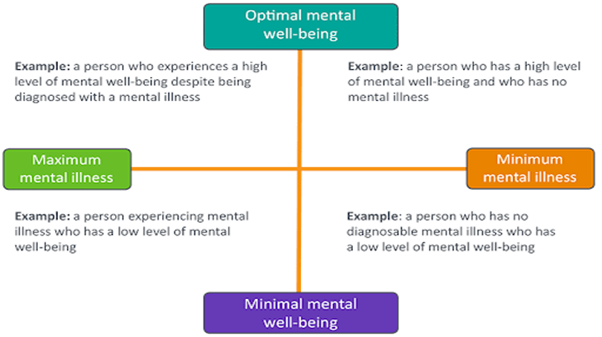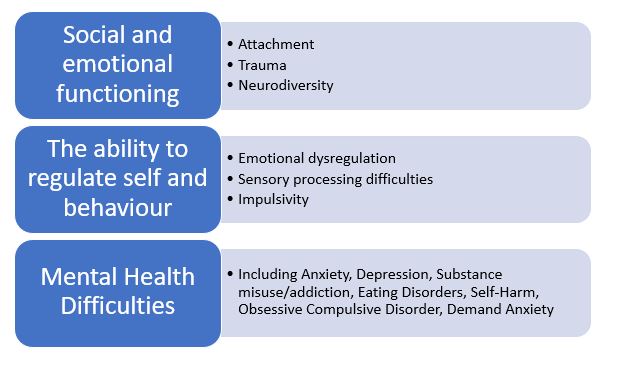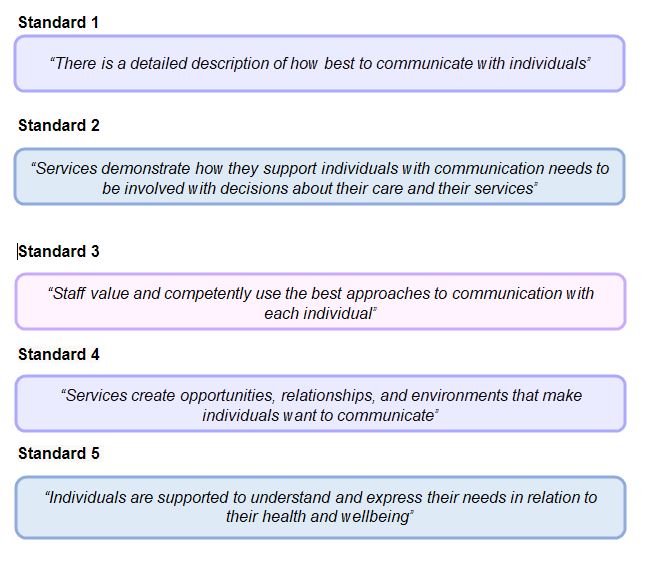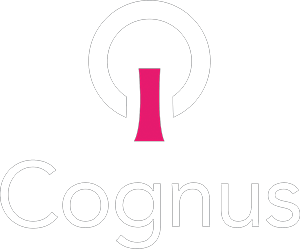SEMH stands for social, emotional and mental health. All of us have different SEMH profiles; this includes needs (meaning things we find difficult) as well as strengths that help us cope with the demands of daily life. Sometimes SEMH needs are significant enough to negatively impact how we manage in daily life.
The Special Educational Needs Code of Practise 2015 highlighted SEMH as a special education need (SEN) in itself. Children and young people demonstrating these needs often struggle to:
- Manage their emotions
- Cope with the demands of the classroom
- Make and keep friendships
It is very common for children and young people with SEMH needs to also have speech, language and communication needs (SLCNS). 81% of children with emotional and behavioural problems have been found to also have language difficulties that had not previously been recognised. In addition, people with a diagnosed communication difficulty are at greater risk of a secondary mental health conditions, commonly anxiety or depression.
Mental health and wellbeing

Our level of well-being impacts our SEMH needs and is also impacted by them. For example, a child or young person may have mental health difficulties but be enjoying a high level of well-being because they have good support in place. Equally, someone may have a low level of well-being, without having a mental health diagnosis.
Supporting a child or young person’s SEMH needs can improve well-being for the child.
The category of ‘SEMH’ includes all the following areas:

How we can support children and young people with SEMH needs
Children and young people with mental health difficulties need to be assessed and supported by professionals. However there are other things that we can all do to support people with SEMH needs and they are included in this section of the Graduated Response.
We can start by ensuring that the Royal College of Speech and Language Therapists (RCSLT)’s 5 Communication Standards are always in place:
The 5 Communication Standards
The RCSLT has developed the 5 communication standards. These highlight essential reasonable adjustments that should be made in any environment to support people with SEMH needs:

See the full, easy-to-read version by clicking on this link: 5-good-comms-standards-easy-read.pdf (rcslt.org)
For a fuller outline and examples please read this document provided by the RCSLT: RCSLT SEMH.pdf
Other things that adults can do
- Be aware that our emotional state will have an effect on the child or young person. If we become agitated or overwhelmed, we cannot support that young person for regulate their own emotions. Adult’s being unregulated are likely to make any difficult situation worse. Adult’s supporting a child or young person working on their emotional regulation using materials from this website, should make sure that they have also got their own strategies for emotional regulation. This is essential.
- A helpful way to interact is to use the PACE approach. (The PACE model)
- Be trauma informed. If an adult working with a child or young person who has experienced significant trauma, they should be ‘trauma-informed’. This is explained in the following
Useful Websites and Resources:
- The 3 R’s guide: Reaching the Learning Brain
- Bring hidden needs to the surface: Hidden needs iceberg.
- Communicating with children/young people with demand-related anxiety
- 5 Steps to Mental Health and Wellbeing – FREE evidence-based framework to help you develop a whole-school or college approach to mental health. It’s interactive, simple, and free. The framework aligns with the eight principles outlined in the Department for Education and Public Health England’s whole-school approach guidance: 5 Steps to Mental Health and Wellbeing (annafreud.org)
- SEED Eating disorder educational toolkit for schools: SEED Educational Toolkit – SEED | Eating Disorders Support Service
- Happy Maps FREE resources for schools and families to support children’s mental health: HappyMaps | Support for Your Child’s Mental Health
For more information about local services please contact: cognus.therapies@cognus.org.uk
